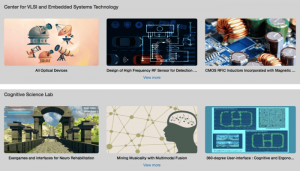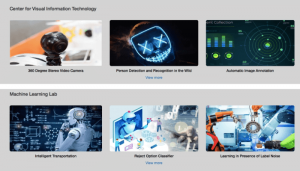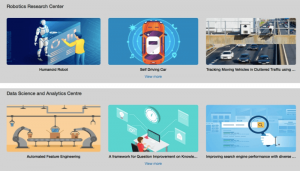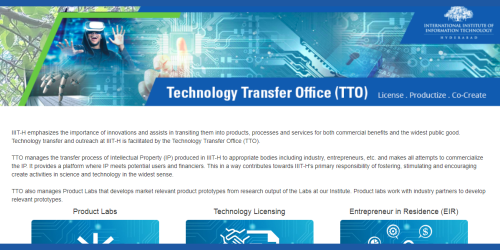Every research institution takes pride in its research. The same is easily available for reference. However, is this enough when someone is looking to adopt research to solve a real world problem? Does the esoteric language targeting peer research community come in the way of understanding its applicability? Read on to find out IIIT-H‘s experiences with this and its attempts at improving the discoverability of the applications of its research.
A strong research portfolio is one of IIIT-H’s greatest strengths. And over the years, the institute has crafted various programmes across diverse research areas with the aim of having an industry outreach. Towards this end, the institute has been actively seeking to accelerate the transfer of scientific knowledge or technology from its laboratories and individual researchers into the marketplace. While such a technology transfer happens through a myriad of ways, licensing of technology forms an important component of the process of movement of technology. Licensing is an allowance granted by the technology owner to another person or organization for using the invention on agreed terms and conditions. Even as there has been significant improvement in the ease and simplification of the process of technology transfer, one of the biggest hurdles lies at the doorstep of the technical institutes itself – the inability to understand and thereby implement breakthroughs in research by interested parties.

Lost In Translation
Traditionally technical institutes have been known to categorize and list out pioneering research work carried out in their labs. While this is handy to document basic or applied scientific research, it often lies in the realm of the esoteric and arcane, understandable by only a select few. “It’s a problem that all academic institutions face. If you look at the amount of licensing that happens, it’s relatively small. And there are many reasons behind it. One key reason is the lack of discovery. Nobody knows what is available in the labs. The research view of innovation is not the same as the consumption view,” explains Ramesh Loganathan, Professor of Innovation and COO at the Centre for Innovation and Entrepreneurship. Citing an example of how research listings are shrouded in academic-speak, Ramesh talks of research dealing with whiteboard picture smudge-correction and edge-detection which was eventually incorporated into a software application. “If you began by looking at the publication, it would be difficult in the publication to figure out that the work could help with whiteboard picture quality cleaning. There would have been a mention of an algorithm but no mention of whiteboard anywhere in the title,” says Ramesh. Similarly, very recently, a Badminton Analytics solution from the Centre for Visual Information Technology (CVIT) was successfully piloted by Star Sports. While its application in the broadcast industry may be straightforward, one may not realise from mere perusal of the research paper that it has applications in the coaching academies as well.

Deciphering The Code
To address this specific problem of translation, the Technology Transfer Office at IIIT-H has come out with a listing of all the research work churned out across various labs on campus in a manner that industry can relate to: By transposing the typical view from the labs and instead listing out available technologies along with the solutions the labs can help create. “The Technology Catalogue is a consumption view of the research work. Anybody thinking of a problem, by looking at the catalogue, will know that IIIT-H can help and how,” affirms Prakash Yalla, Head of the Technology Transfer Office.

Tech Listing
Covering 18 labs, the Technology Catalogue enables one to search for relevant research area categories lab-wise on the institute’s website. For example, if you are interested in the control or prevention of fake news, or looking for a method to get personalized news content, you would look at Tools for Computational Journalism under the Information Retrieval and Extraction Lab at the Language Technologies Research Centre. You will find not only a tech description in layman’s terms, (This technology discovers patterns in a users reading behaviour for news personalisation. It leverages news content for better recommendations. It can also automatically identify unconventional news (Fake News, Bizarre News). Another major feature is the support for multiple languages and the language agnostic approach. It can summarise news in multiple languages and can translate news from one language to another for quicker spread.) but also a list of potential applications, along with a link to the relevant publication. Such a process of discovery is proving to be more useful for anybody looking at it from either the industry or startup.

Starting Point
As the institute starts to look at research collaboration with companies, the catalogue is significantly helping in taking the first step forward. While the list is indicative only and by no means an exhaustive one, it currently serves the purpose of initiating professional parleys with companies. Ramesh mentions scenarios where the tech catalogue comes in handy. “Sometimes companies approach us with a specific problem, in which case it is easy to help out. In other cases, they have a set of problems but don’t know which one to take up first. And other times companies without a specific problem want to collaborate and discover possibilities, in which case the catalogue becomes a solid starting point.” Yet another use case of the catalogue is in the Entrepreneur-In-Residence (EIR) programme. It is a unique way for entrepreneurs to leverage research from IIITH labs. “We sometimes find candidates for open EIRs where there is a possibility to work in any area that interests them. Again, we hand them the tech catalogue and ask if something from that resonates with them,” says Prakash.

Efforts in the direction of jargon-free compilation and description of all institute-based tech work began over a year ago. While it was a printed booklet in its initial avatar, since then it’s a live document, available online. “It is browsable, variable and most importantly live. Plans are afoot to make it look like an App store. We also intend to make it more interactive by adding various links and uploading video demos,” says Prakash.
You can find the Technology Catalogue here

